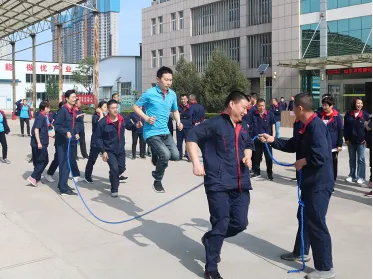Rope Technology in the 19th century
SIDEBAR: climbing rope TECHNOLOGY to 1953 (technical info)
Ropes are one of human’s earliest tools, and rope-making among the oldest human skills. A section of rope crafted 50,000 years ago was recently found in a cave in southeastern France (2020); this archaeological fragment was created with rope-making techniques still used today: twist a bundle of fibres in one direction (in this case, fibrous tree bark), then twist three of those bundles (3-ply) in the other direction, to build a strong “laid” rope.
The natural twisted-fiber rope was the state-of-the-art tool for mountain climbing until 1953 (footnote 1). The specific design such as three or four ply, the longitudinal angle of the “lay”, and other variations have trade-offs for climbing rope characteristics: e.g. strength, elasticity, durability, water absorption, and suppleness. For example, a steep "lay" lessened water absorption, but made for a stiffer, harder-to-use rope, so a medium lay was generally recommended.
Footnote 1: Braided woven ropes were also used but generally rejected as internal damage was difficult to readily detect. In 1953, kernmantle rope technology using a separate core (kern) covered by a braided sheath (mantle) was used to produce climbing ropes in Europe. Kernmantle climbing ropes were made possible by the new nylon fibres that were becoming more readily available in the post WWII years. But despite the improved technology, it wasn’t until after 1972, when Chouinard started supplying his “Fantasia” brightly coloured ropes, that the kernmantle rope design became the standard rope for most climbers in the USA.
Natural fibre climbing ropes used from the 1800’s to the 1960’s generally had the same diameters of ropes we use today (8mm-11mm), yet less than half the strength (~2000 pounds-force/>10kN). Two natural fibres were primarily used: the coarse hemp fibres from the cannibis plant, and the harder manila fibres from the abaca plant (banana family). The fibres varied from a few millimetres to a meter in length (compare with modern synthetic ropes which have continuous fibres, i.e. 200m fibres for a 200m rope). Finer and softer flax fibres were also used, but flax ropes are sensitive to rot and degrade quickly with outdoor use due to UV damage.
Standard climbing rope lengths of this era were generally between 60' to 120' long (18m - 36m), and were mostly used as a rock climbing tool to lasso a horn or feature, to descend hand-over-hand, or to protect a short traverse with only one climber moving at a time. Natural fibre ropes have high impact forces (low stretch) which means they cannot absorb a lot of energy before they break. Guides could use them to catch falling clients below, but the adage, "the leader must not fall" was more than just a mantra, as ropes were expected to break in an 8 foot (2.5m) fall, based on tests reported in the 1864 Alpine Journal and which remained the common wisdom until the mid-20th century. Furthermore, the high impact forces combined with being tied in solely around the waist (no leg-loops) also meant that a long fall could likely break one’s back—if indeed the rope did not break!
Typical rope use in the early era of rock climbing (1)—as part of a human anchor chain, to catch the second climber.
Typical rope use in the early era of rock climbing (2)— to ascend or descend by lassoing a natural feature..
Typical rope use in the early era of rock climbing (3)—first climber gets help to manoeuvre over an obstacle while dragging the rope, rope then used to pull the second climber over same obstacle.
If a natural fibre rope did take a fall, it would lose most of its natural elasticity and generally needed replacement. Furthermore, the strength of natural fibre ropes diminished rapidly with time. The 1942 Handbook of American Mountaineering (Henderson) warned that "Tests have shown that a new rope kept over winter in the average house and not used will lose as much as one-half its strength”.
During this era, the concept of a rope to protect a long climbing lead fall was unthinkable. Elongation under load is the primary parameter of a rope’s ability to absorb energy in a fall, and not break, yet natural fiber ropes do not offer a wide variability in this regard. Furthermore, there was little consideration of rope elasticity as a desirable rope feature; indeed, the "sponginess" of a rope was considered a negative quality by many climbers as well as a major climbing rope manufacturer in the 1930’s (footnote 2).
Footnote 2: S.B. Donkin astutely reports in the 1932 Alpine Journal:
"British Ropes point out that the elongation of their rope (ed: a hemp rope) under load is much less than that of the other make of rope tested (ed: a manila rope), and that, in their opinion, 'this is of some importance, as it would tend to prove that Beale's (manila) rope is of a more spongy nature than ours.' This statement suggests to the reader that a rope having a minimum of stretch is the better rope. It is this interpretation which I wish to correct, because the reverse is true. Engineers know that a rope which has the greatest stretch must be the safer rope to use.”
In 1920, Geoffrey Winthrop Young in Mountain Craft recognised that an "indirect belay" where some sort of slippage occurred in the belay was preferable to a "direct belay" (rope anchored or held fast during a fall), but it wasn't until the 1930's that the shock-loading characteristics of a climbing rope were formally recognised and considered, and the awareness of energy absorption over a longer time led to specific "dynamic belay" techniques—intentional controlled rope slippage—first outlined by Richard Leonard in the USA and later by Ken Tarbuck in the UK. Only then did climbers feel more secure in taking actual lead falls on the high-impact-force natural fibre ropes of the era, and only then with an expert (gloved) belayer.
Technical info on natural fibre ropes vs nylon from the 1951 Alpine Journal:
—note about rope specification between 1864-1932: ropes were specified by weight (in pounds) per 100 feet, and the rope circumference (in inches). For example, a rope with 1 1/4 inch circumference (10.1mm diameter) might be specified as a 4.5 pound/100 foot rope. So the 5 lb. natural fibre rope listed on the diagram above is about a 10.5mm diameter rope.
Rope Technology 1892 (Dent)
The infamous Matterhorn accident on the descent. Ropes do not actually “break” as often imagined, but they generally get cut under tension from a rock or other sharp object. A rope breaking really means it failed at the point of most stress, often at a knot, and with other factors involved.










